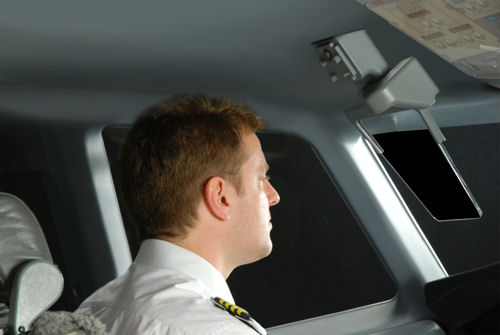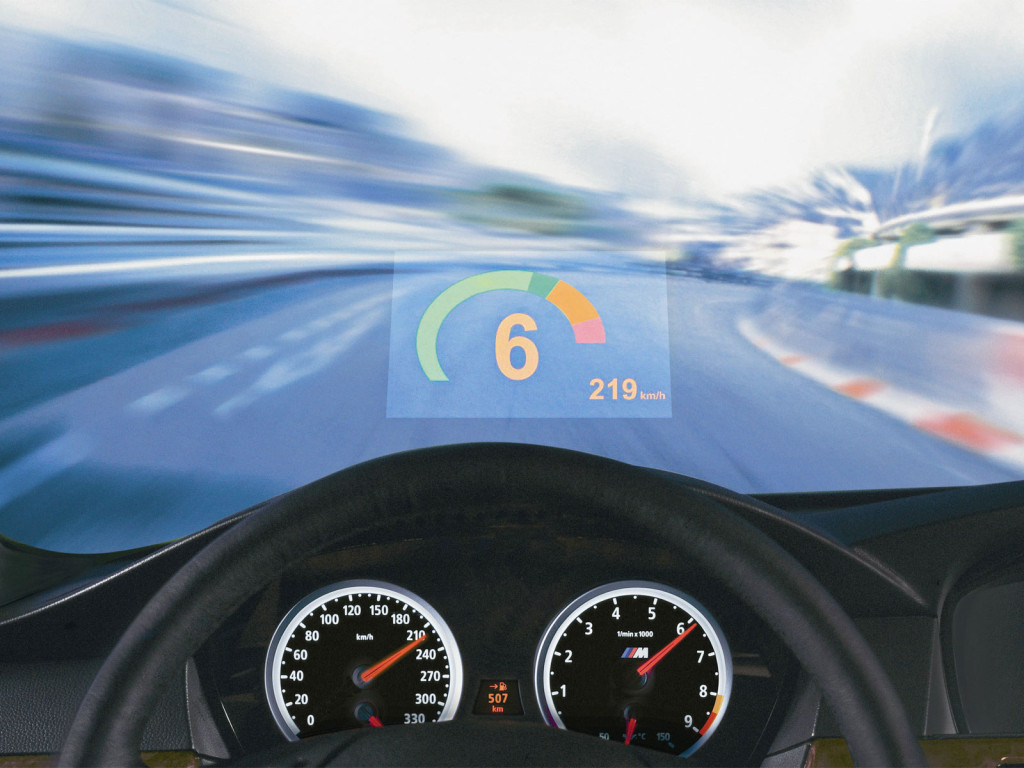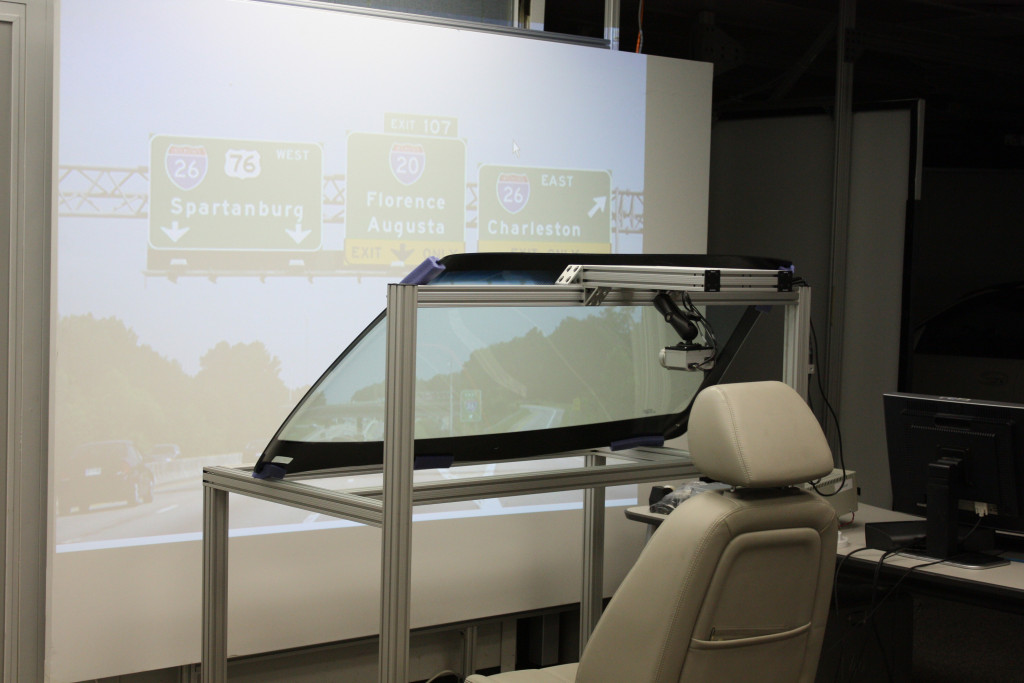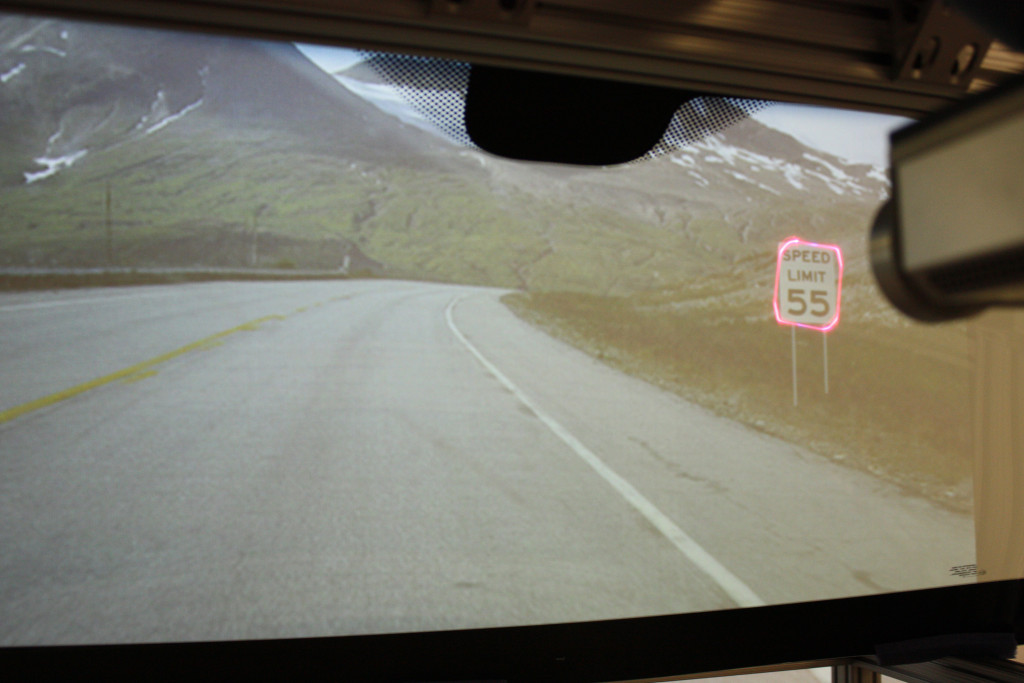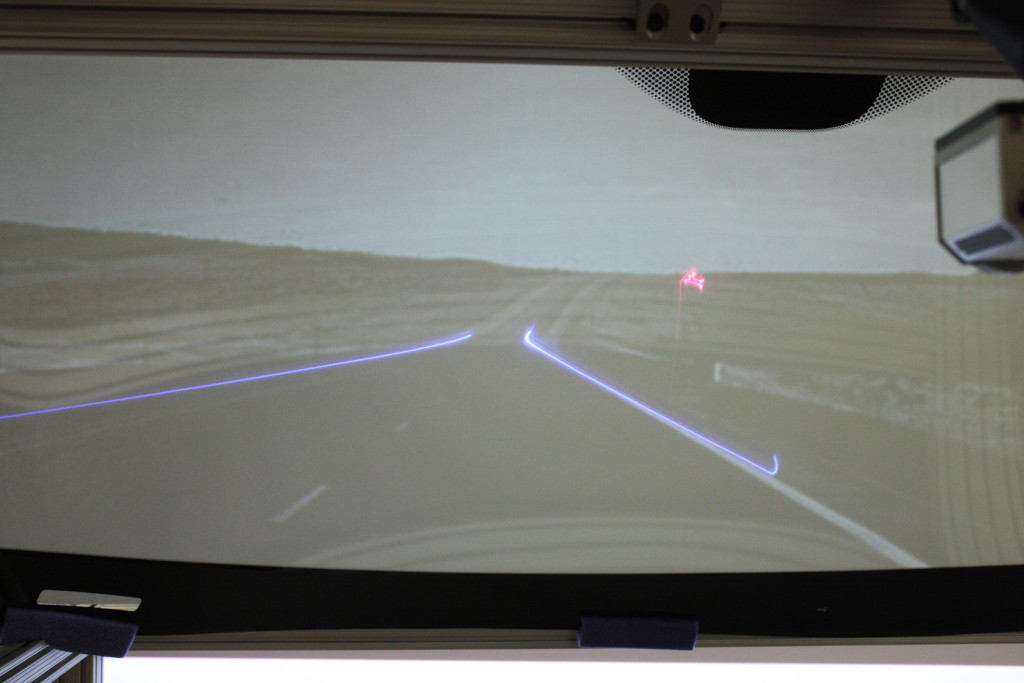If you became too fond of that informational HUD (Head-Up Display) from your computer racing games, then you’re going to be thrilled with GM’s latest research program. And even if high-tech is not your thing, you’re still going to find this fascinating, if not from a technological point-of-view at least from its real-world implementation perspective.
The Head-Up Display (HUD) is a notion used to describe a series of critical information portrayed in front of someone’s viewpoint in order to ease his or her focus for the task at hand. GM’s latest research program deals with creating a full windshield interactive HUD that would assist the driver of a vehicle in a wide range of potentially dangerous situations, by alerting him or her of obscure hazards.
The History of Head-Up Displays
Well, like many other technologies we now enjoy on a daily basis and frankly take them for granted (like the microwave oven), the HUD concept was first developed for military use. Created to aid the pilot of a military aircraft during missions, the HUD was essentially an augmentation of a pipper or PIP marker (Predicted Impact Point). Its role was to display a probable point of impact or location for a ballistic projectile, like a bomb, missile or bullet. In time, the HUD was extended to show (thanks to the advancement in technology) several ballistic variables like aircraft velocity, target velocity, target elevation, distance to target, forces on the projectile (drag, gravity), and others.
The first military aircraft to receive an HUD was the British-built Blackburn Buccaneer, following a joint research by the Royal Aircraft Establishment (RAE) and Cintel. The Buccaneer prototype first flew on April 30, 1958.
The projector unit uses one of three types of light emitting sources to project the image, namely a Cathode Ray Tube, light emitting diode, or liquid crystal display. In the early days of HUDs this was accomplished through refraction, but modern HUDs use reflection for improved readability.
In GM’s next-generation head-up system, the whole windshield is coated with a series of transparent phosphors which emit visible light when excited by a light beam from a compact laser, transforming into a large area transparent display. In pursuing to make driving safer, GM wired the full-screen HUD to a series of top-of-the-line sensors like night vision systems, global positioning navigation and camera-based sensor technologies.
The system will also introduce a new concept in GPS navigation, allowing the driver to actually see the desired point-of-interest, such as a building, thanks to the system’s feature that highlights the aforementioned object on the screen in real time.
Apart from road sign recognition, which could prove very useful in poor-visibility conditions like fog, heavy rain or nighttime, GM’s next-gen HUD is also able to detect road lanes and even identify and highlight animals roaming along the side of the road, that could have avoided recognition with the naked eye.
Although GM’s Research&Development group lab manager, Thomas Seder, said the company doesn’t plan to introduce the system as a whole in a future GM vehicle program, he admitted some of the supporting technologies could end up in GM vehicles in the near future.
Below, you can watch Thomas Seder, GM’s R&D group lab manager, giving a short introduction of their new HUD research project:
The first military aircraft to receive an HUD was the British-built Blackburn Buccaneer, following a joint research by the Royal Aircraft Establishment (RAE) and Cintel. The Buccaneer prototype first flew on April 30, 1958.
The Implementation of HUDs in Commercial Airlines
The next step in the history of HUD interfaces was its introduction to commercial airplanes. The system’s implementation in this sector proved of great importance, as it actively contributed to reducing flight-related hazards derived from reduced-visibility. Studies conducted on the use of HUDs in commercial airlines (from the International Journal of Aviation Psychology, 2007, Vol. 17) found that lateral deviation from the centerline of a runway during landings decreased consistently in all landing conditions, although the touchdown point along the centerline was not changed. This demonstrates the system’s ability to aid the pilot’s horizontal perception.HUDs in Passenger Vehicles
The first company to implement the HUD technology in the automotive sector was General Motors, in 1988, with their Oldsmobile Cutlass Supreme model. Since then, other car manufacturers also adopted the technology on their sport or luxury vehicles. The first European automaker to offer an HUD interface was BMW. Current vehicle HUD devices are placed either right in front of the driver, above the steering wheel, or slightly towards the center console. The projected images usually offer speedometer, tachometer, navigation system or lateral G forces information.So How Does it Work
A Head-up Display system is usually comprised of a combiner, a projector unit and a video generation computer. The combiner is the surface onto which the data is projected and is located directly in front of the pilot or driver. It can take either a concave or flat shape and has a special coating (most commonly, phosphor) which reflects the monochromatic light from the projector unit, while allowing all the other wavelengths of light to go through. This creates a fluorescent or phosphorescent image of high visibility that overlaps the driver’s real view.The projector unit uses one of three types of light emitting sources to project the image, namely a Cathode Ray Tube, light emitting diode, or liquid crystal display. In the early days of HUDs this was accomplished through refraction, but modern HUDs use reflection for improved readability.
GM Envisions a new HUD concept
General Motors’ research in this field aims to create a full windshield HUD that will also actively assist the driver and not simply display a series of technical parameters and data. GM’s study is conducted with help from Carnegie Mellon University and The University of Southern California, as well as other institutions. Their aim is to improve driver visibility and object detection ability with the help of a full-size HUD that will cover the whole windshield to better integrate with the driver’s natural field of view.In GM’s next-generation head-up system, the whole windshield is coated with a series of transparent phosphors which emit visible light when excited by a light beam from a compact laser, transforming into a large area transparent display. In pursuing to make driving safer, GM wired the full-screen HUD to a series of top-of-the-line sensors like night vision systems, global positioning navigation and camera-based sensor technologies.
The system will also introduce a new concept in GPS navigation, allowing the driver to actually see the desired point-of-interest, such as a building, thanks to the system’s feature that highlights the aforementioned object on the screen in real time.
Apart from road sign recognition, which could prove very useful in poor-visibility conditions like fog, heavy rain or nighttime, GM’s next-gen HUD is also able to detect road lanes and even identify and highlight animals roaming along the side of the road, that could have avoided recognition with the naked eye.
Although GM’s Research&Development group lab manager, Thomas Seder, said the company doesn’t plan to introduce the system as a whole in a future GM vehicle program, he admitted some of the supporting technologies could end up in GM vehicles in the near future.
Conclusion
Honing the system’s ability to identify and highlight in real-time objects and animals and display them in a natural and easy fashion for the driver to assimilate, GM hasn’t just gathered a series of sensors in a nice package, but triggered the next-generation development of HUDs.Below, you can watch Thomas Seder, GM’s R&D group lab manager, giving a short introduction of their new HUD research project:
